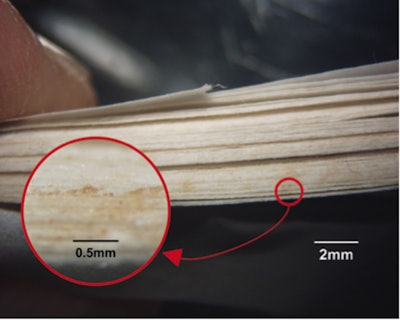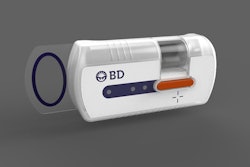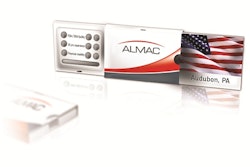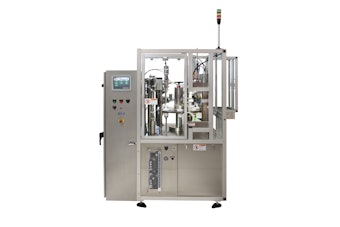
The modern analytical laboratory is equipped with an array of hi-tech instruments for analyzing and identifying samples. But sometimes, all that is needed is a visual examination under a microscope to identify an unknown material.
A pharmaceutical packager noticed faint brown stains on the edges of large rolls of coated paper stock that were stored in its warehouse. The company suspected grease or debris from the warehouse environment as the cause of the stains.
When the sample was initially examined under a low-power microscope, the brown stains were composed of globs of transparent brown material at the edge of each layer of paper (Figure 1). Near the edges, the individual sheets of paper were stained with a lighter brown color.
Samples of the brown material approximately 100µm in size were removed with a needle, and pressed onto a potassium bromide crystal for infrared analysis. During this process, the brown material was found to be composed of clusters of hundreds of semi-round particles. Infrared analysis of the brown material indicated protein and carbohydrate species. The chemical composition and visual appearance of the sample suggested biological material.
The brown material was examined under a polarizing light microscope. The brown material was composed of hundreds of semi-round particles, 4 to 5 micrometers in size.
Sections of the paper were treated with methylene blue counterstain, which is absorbed by biological materials. The stained samples were examined in the polarizing light microscope at magnifications up to 800X using an oil immersion objective, which is used to increase the resolution of the microscope at high magnification. Many rounded spores, chains and clusters of spores, and occasional fungal hyphae could be seen in and on the paper sheet, and between the fibers.
The brown stains were identified as fungal growth. If left untreated, the fungus would result in unacceptable staining of the finished package. The pharmaceutical company incorporated a fungicide in the paper coating formulation and implemented stricter environmental controls in the warehouse to solve the problem.
Article supplied by Mary Stellmack, senior research chemist, McCrone Associates, Inc., the analytical services division of The McCrone Group. Stellmack co-teaches a course in Infrared Microscopy at Hooke College of Applied Sciences.






















